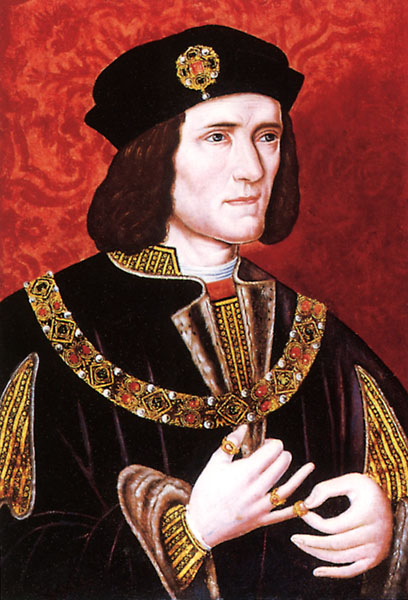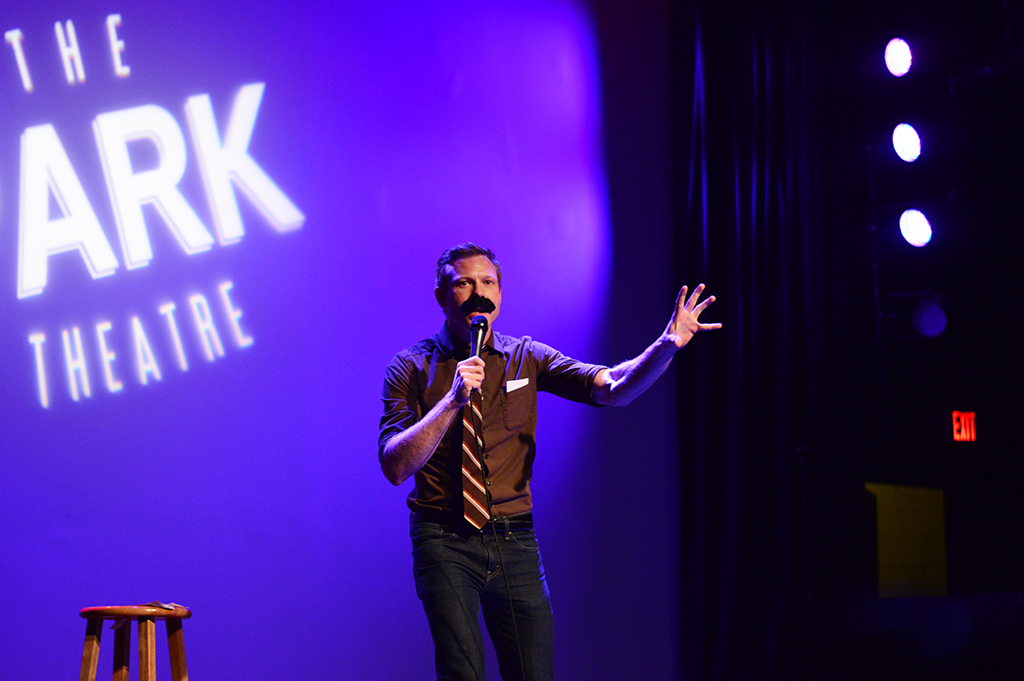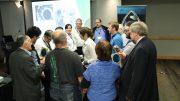English scientists, archaeologists, and historians have confirmed that the skeleton discovered beneath a parking lot in Leicester is that of Richard III, the last king of England to die in battle. The skeleton was found in September, 2012 in a joint project of the University of Leicester, the Richard III Society, and the Leicester City Council. Months of research and tests followed until last Monday, when it was announced that all of the evidence indicates that the bones did indeed belong to the former monarch.
And every tale condemns him for a villain
Though Richard III reigned only two years, he occupies an important place in English history. He was also the last of the Plantagenet dynasty, which was supplanted by the Tudors when Richard was defeated at the Battle of Bosworth Field. His death marked the end of the War of the Roses, which is often considered the end of the Middle Ages in England.
The popular image of Richard III comes almost entirely from Shakespeare’s play, written over a hundred years after the king’s death, which portrays him as an ambitious, amoral schemer who systematically kills his relatives in order to secure his claim to the throne. Richard is also deformed in the Shakespearean version, with a hunchback, crooked legs, and a “withered arm.” Historians have long debated how much of the Shakespearean Richard is truth and how much is Tudor propaganda.
In August of 1485, Henry Tudor returned from exile in Brittany to seize the throne. Richard III met his army in Leicestershire later that month, but they lost the battle and Richard was killed. His body was displayed and then given to the local Franciscan friary to be interred at the church of the Greyfriars. A monument was erected in 1495, but Henry VIII (Henry Tudor’s son) later dissolved the monasteries, demolished the church of the Greyfriars, and Richard’s remains were lost.
Though the exact location of the church was not known, the general area is still known as Greyfriars today. In 2011, the Richard III Society commissioned the University of Leicester (U of L) Archaeological Services (ULAS) to look through old maps and documents to identify possible sites for archaeological digs. ULAS identified two possible sites: the Leicester City Council Social Services parking lot, and the adjacent playground of a former school.
Now is the summer of our disinterment
The dig began at the Social Services parking lot in August of 2012, and within the first two days some hints of the friary had been discovered. On Sept. 5, the team found a skeleton awkwardly propped up in a grave that had been dug too small. There was no coffin, and the skeleton’s position suggested it wasn’t even wrapped in a shroud. The hands were in an unusual position, suggesting they may have been tied, and the feet were missing. The spine had a distinctive S-shaped curve to it.
At this point the historical evidence already suggested that the body belonged to Richard III – it had a crooked spine, battle wounds, and was buried in the Greyfriars Church. In the months that followed, the skeleton was examined by U of L researchers to confirm suspicions.
The remains were analyzed with radiocarbon dating, a method of dating that uses the decay rate of C-14, an unstable isotope of carbon, to determine the age of a sample. The remains were dated at two separate labs at the University of Glasgow and the University of Oxford. The labs arrived at the year ranges of 1430-60 and 1412-49, respectively. Since Richard III died in 1485, this would indicate that the skeleton is not his.
However, the proportion of C-14 varies in relation to the atmosphere and the ocean – and radiocarbon dating of marine animals can be off by centuries. This effect even occurs in land animals with a seafood-heavy diet. Mass spectrometry of the skeleton’s bone samples revealed a high-protein diet with a large amount of seafood. Adjusting for this confounding factor, the scientists came up with a range of 1475-1530.
After the bones were excavated, the archaeologists cleaned them with water and soft brushes. When the bones were clean, several more injuries were revealed. There were ten injuries in all. Two were major, potentially fatal injuries to the skull. Others were more minor battle wounds, and a few were in places that would have been protected by armour. These may have been humiliation or punishment blows dealt to the body after death. An osteologist examined the bones and concluded that they were from an adult male in his late twenties or early thirties with an unusually slender build. Richard died at the age of 32, and contemporary accounts mention his thin frame.
Where grow the branches when the root is gone?
The clinching evidence was the mitochondrial DNA analysis. A small amount of DNA exists in our mitochondria, organelles within our cells that convert energy from food into a form that we can use. Since the mitochondria of sperm cells are destroyed during fertilization, mitochondrial DNA is passed down unchanged from mother to child (aside from small mutations). Thus, if a descendant of Richard’s mother Cecily Neville can be found by a female line, their mitochondrial DNA should closely resemble the skeleton’s.
As it happens, the U of L researchers already knew such a descendant: Michael Ibsen, a Canadian furniture maker who now lives in London, England. Historian Kevin Schürer was tasked with verifying Ibsen’s descent, and in the process he discovered a second descendant (who asked to remain anonymous). A number of descendants by an all-male line (which allows the comparison of Y chromosomes) were also found.
DNA samples from the skeleton, Ibsen, and the anonymous descendant were analyzed at the University of York and independently verified at the Université Paul Sabatier in France.
“The first step was to determine if the two female line relatives—Michael Ibsen and the second person—shared the same mitochondrial DNA sequences. The analysis showed that these two individuals shared the same relatively rare mitochondrial DNA sequence,” said Turi King, the U of L’s geneticist in charge of the project.
Although DNA breaks down over time, the burial conditions were such that a DNA sample could be obtained from the Greyfriars skeleton. King’s analysis found that the skeleton’s DNA and the samples from Ibsen and the anonymous donor were a match. Analysis of Y chromosomes in male-line descendants is ongoing.
At this time none of the research has been published in academic journals. The U of L drew criticism for putting out press releases and a television documentary before the academic world has had a chance to look at them. An editorial in New Scientist called for the release of the DNA evidence, and Ross Barnett, an ancient DNA expert, told Science that “There may be more data. There probably is. But what was presented of the DNA work falls far short.” But the work was defended in a Nature editorial. According to Nature, the identification of the bones rests on a number of factors, not just the DNA, and the discovery “goes beyond the boundaries and the conventional audience of academia.”
For now, the identity of the Greyfriars skeleton seems secure. The remains are going to be reburied at Leicester Cathedral next year. Plans for a tomb are in the works.




